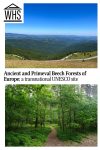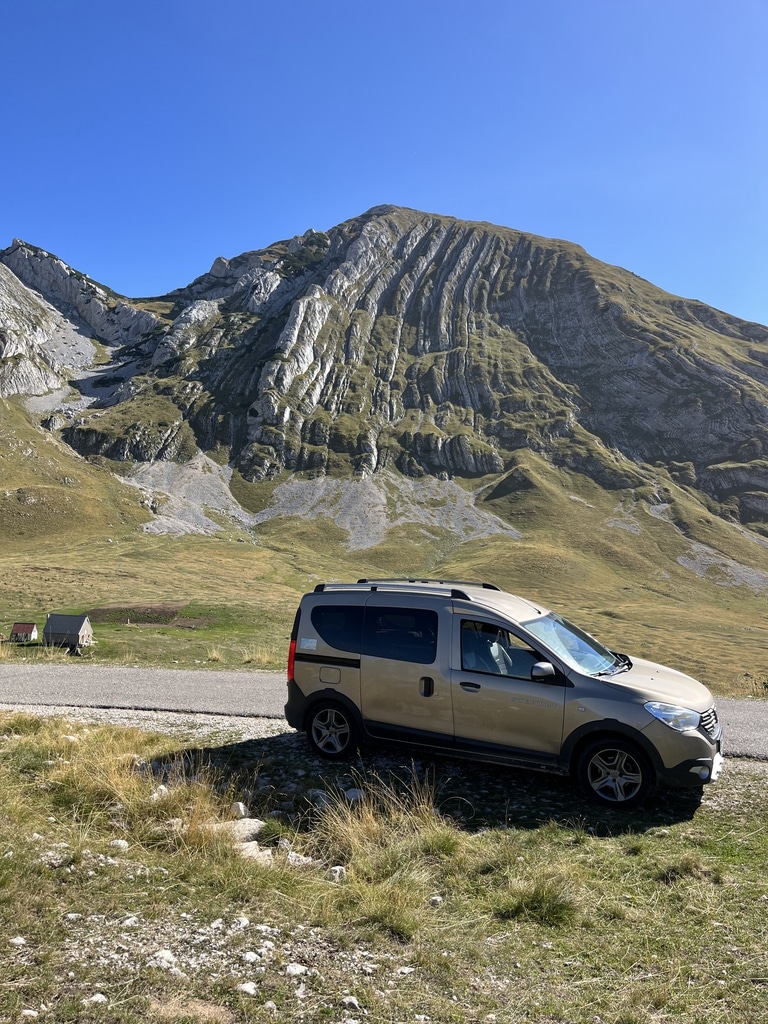Ancient and Primeval Beech Forests of the Carpathians and Other Regions of Europe
By Cornelia Huthmann
What are the Ancient and Primeval Beech Forests?
This collection of beech forests in Europe is a group of unique ecosystems that have existed in rich diversity on our continent for thousands of years.
The European beech (Fagus sylvatica) survived the adverse climatic conditions of the ice ages in a few spots in southern Europe. After the last Ice Age about 11,000 years ago, the European beech spread from there and still exists in large parts of the European continent today. Its spread can be traced across the entire continent and is a living testimony to its genetic adaptability.

Disclosure: This article contains affiliate links. Making a purchase through an affiliate link will mean a small commission for this website. This will not affect your price. Privacy policy.
However, beech forests are not only important research objects for scientists studying the ecological processes and biodiversity of these unique habitats and the natural development of forests; they are also home to numerous rare and endangered animal and plant species and play a crucial role in the carbon cycle and water balance. The forests store large amounts of CO2 and thus contribute significantly to climate protection. As important water reservoirs, they regulate the water balance in their regions. And, in UNESCO‘s words, “The interplay between a diversity of environments, climatic gradients and different species gene pools has and continues to shape this high diversity of beech forest communities.”
This transnational UNESCO site includes forests in 18 countries: Albania, Austria, Belgium, Bosnia and Herzegovina, Bulgaria, Croatia, Czechia, France, Germany, Italy, North Macedonia, Poland, Romania, Slovakia, Slovenia, Spain, Switzerland and Ukraine. You can see their locations most easily on their collective website.
Note: Until the war is over, we do not recommend visiting Ukraine, and we can’t know until then to what extent its UNESCO World Heritage sites have been damaged.
Why are the Ancient and Primeval Beech Forests of Europe a UNESCO World Heritage site?
UNESCO considers the forests important in terms of scientific understanding of “the re-colonization and development of terrestrial ecosystems and communities since the last Ice Age,” especially because they have spread across a range of different ecological conditions. It is important to preserve the undisturbed elements of it since they “contain an invaluable population of old trees and a genetic reservoir of beech and many other species, which are associated with and dependent on these old-growth forest habitats.”
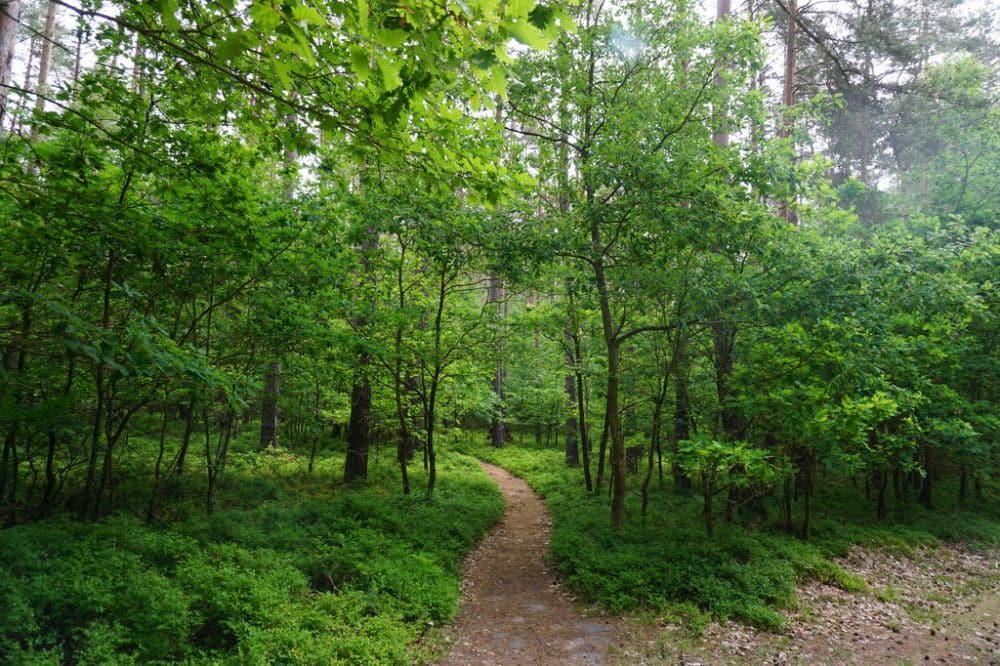
Ancient beech forests are threatened by human activities such as deforestation and agriculture. Their protection and sustainable management are of great importance to preserve their ecological functions and genetic diversity for future generations. Therefore, some of the last remaining primeval beech forests in Europe became a UNESCO World Heritage site in 2007, with several additions to the list in later years.
Today, the site consists of 93 locations in 18 countries, though the number 93 is a bit misleading. For example, four of the listed forests are within a single park in Italy: the Abruzzo, Lazio and Molise National Park. The number of locations is probably closer to 55. Nevertheless, the total land area is enormous: 989 square km (382 square mi), but this only includes the forests themselves, not the buffer zones established around them. They add up to 2,963 square km (1,144 square mi), for a total protected forest area of 3,952 square km (1,526 square mi).
The pristine beauty and tranquility of these forests offer visitors the opportunity to experience the natural processes and biodiversity of these unique ecosystems, and their protection contributes to education and awareness of nature conservation.
What can you expect on a visit to these beech forests?
I visited some of the beech forests in various countries on my tours of the World Heritage sites in Europe in 2020 and 2023. The forests are not always easily accessible or clearly signposted as World Heritage sites. Here are some prominent examples in more detail:
Hainich National Park, Thuringa, Germany
Hainich National Park is characterized by its particularly good presentation. I last visited the national park in 2020. From afar, you can see the observation tower glowing orange above the treetops. When you climb the tower, you can survey the vastness of the forest.
I was at the hikers’ parking lot early in the morning and was able to experience the forest promenade with its stations completely undisturbed. I highly recommend this walk as an introduction to the national park. There are detailed information panels along the way. The forest walk is free and freely accessible.
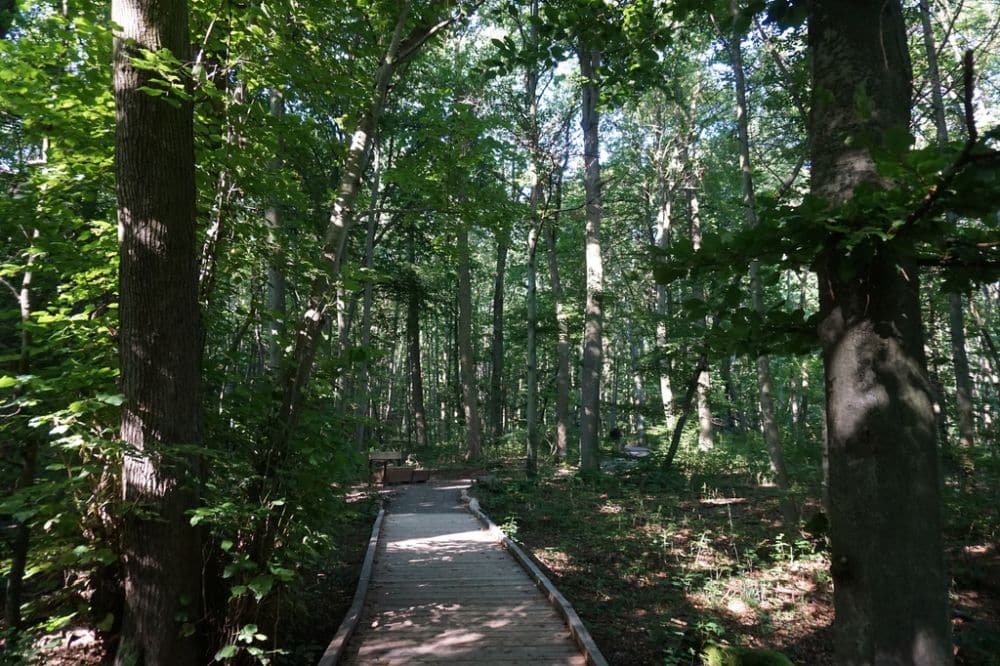
The highlight of a visit to the Hainich is the treetop walk. It begins in the lower canopy area and leads up into the treetops. The trees here are 20 to 30 meters high (66-98 feet), and from the top platform at 44 meters (144 feet), there is a fantastic view of the Thuringian landscape. A combination ticket available at Hainich’s World Heritage Center includes the treetop walk and admission to the exhibitions.
The National Park Center houses two exhibitions, partly interactive and designed for all ages. Using a timeline, human impact on nature is documented unobtrusively yet emphatically. I particularly enjoyed the film about the wildcats in the national park. The Root Cave exhibition offers a completely new perspective, and I found the virtual journey into the depths very interesting.
Find accommodations near Hainich National Park.
Serrahn Beech Forest in Müritz National Park, Mecklenburg-Western Pomerania, Germany
On my 2021 tour of Northern Germany, I visited the Serrahn Forest in Müritz National Park. A hike in this forest is my second recommendation for exploring this World Heritage site.
Serrahn is easiest to reach by car (or alternatively by bus). You park in a forest hiking car park (see below) and walk or cycle through the forest. The trail is well signposted and accompanied by diverse information panels. The focus here is on restoring the original beech forest from a forest that was formerly largely managed or altered. North American oaks stand at the forest entrance, and a winding path leads to the beech forest.
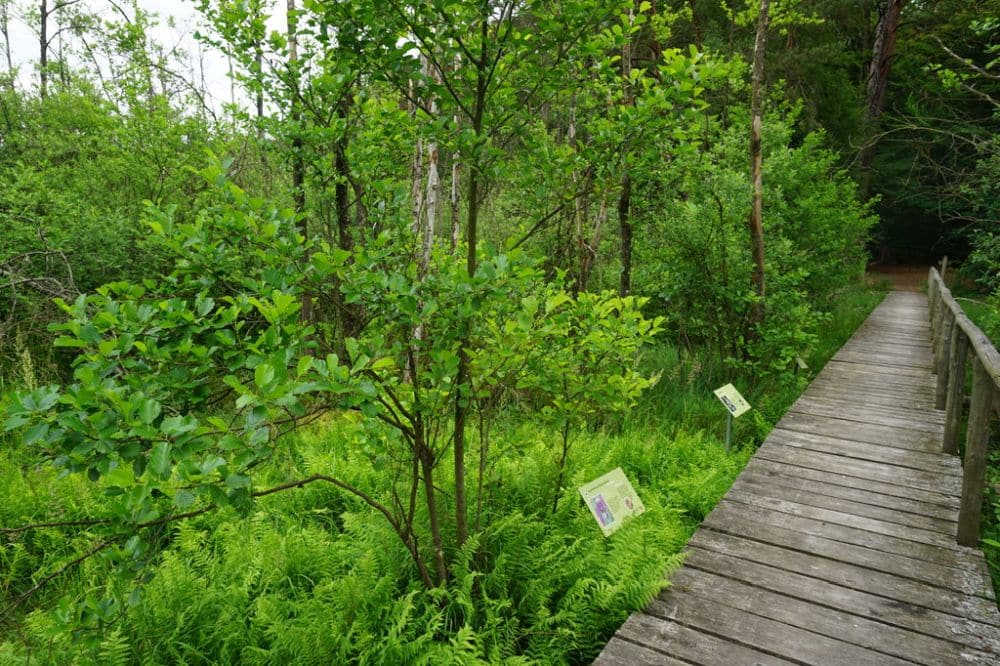
At the end of the trail, a footbridge leads over the moor. There is a small, free World Heritage exhibition that provides information about the history, maintenance, and research of the forest.
Find accommodations near Müritz National Park.
Dürrenstein-Lassingtal Wilderness Area, Austria
The Dürrenstein Wilderness Area is Austria’s largest old-growth forest and is strictly protected. I visited it in 2023. The House of Wilderness in Lunz offers an informative exhibition and guided hikes. You can also hike in and around Lake Lunz on your own.
Find accommodations in Lunz, Austria.
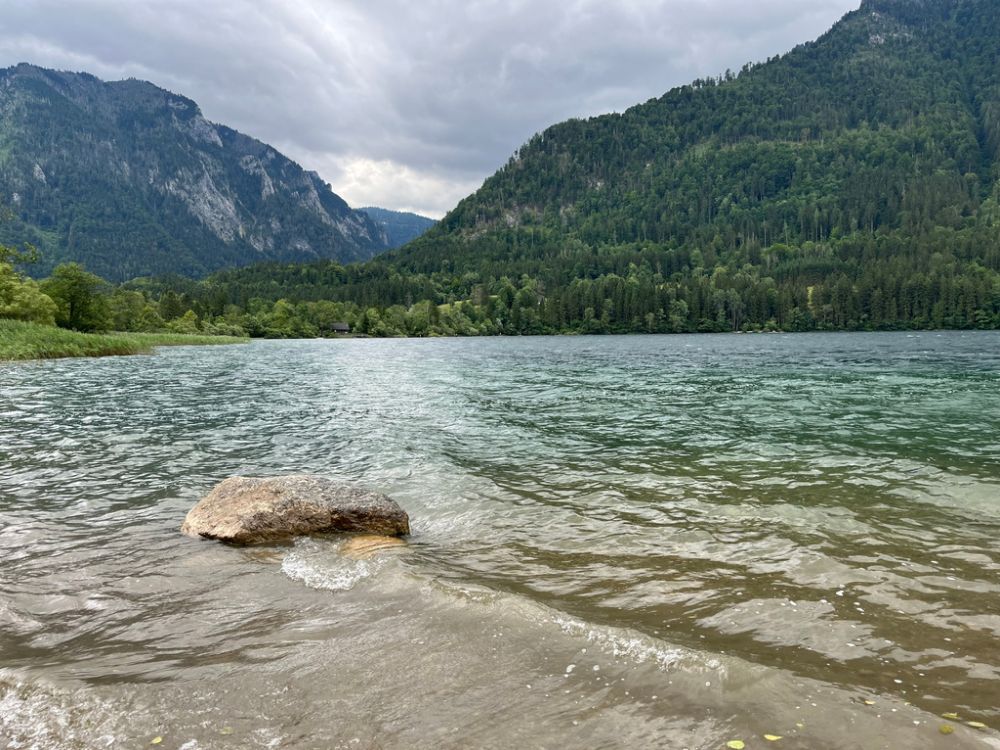
Jizera Mountains, Czechia
In 2023, I hiked along the German-Czech border in the Jizera Mountains. Spring had just begun, and the gentle sun cast a golden shimmer on the bright green of the young leaves. The Jizera Mountains are an interesting and popular hiking area with mountains, cliffs, and viewpoints. Interpretive panels can be found at various points along the trail.
Find accommodations near the Jizera Mountains.
Central Balkan National Park, Bulgaria
Nine of the list of 93 components of this serial UNESCO site are within the Central Balkan National Park. On my 2023 tour through Bulgaria, on the way to Sofia, I drove directly past the National Park and made a detour to the Troyan Pass, where a 20-km-long (12.4 mi), strenuous and spectacular climb leads up the mountain. But it’s worth it, because at the top, at an altitude of 1,600 meters (5,249 ft), a wonderful hiking area begins with fantastic views of the surrounding countryside and the wooded valleys. Parking and picnic areas at the top invite you to rest.
Find accommodations near Central Balkan National Park.
This guided day hike in Central Balkan National Park leaves from Plovdiv, Bulgaria.

Are these beech forests worth visiting and what sorts of travelers would like them?
These forests are beautiful pieces of nature, ideal for all nature lovers and hiking enthusiasts. I can only vouch for the ones I’ve visited, but I would suspect that any of them would be enjoyable if you’re in the area. It’s definitely worth taking your children and young people with you to see one of the exhibitions described above, if possible, and then exploring the forest from a slightly different perspective.
Hainich National Park: In my opinion, this not only offers the best presentation of the World Heritage site, but also a forest experience for all the senses, full of fun and eye-opening moments. A day trip here is worth it. A visit to the Hainich Forest is a valuable addition to exploring the Free State of Thuringia and complements other World Heritage sites, such as Weimar or Wartburg Castle.
Serrahn Forest: A wonderful and very interesting excursion/hike during a vacation in the Mecklenburg Lake District. Here you can get to know the Müritz region from a different perspective than just from the water.
Dürrenstein-Lassingtal: Lake Lunz is a romantic place in the heart of Austria; the journey there is quite spectacular. You can combine the visit/excursion with a boat trip or a guided hike. Tip: be sure to visit the Töpper Bridge not far from the village!
Jizera Mountains: As a complement to a hiking vacation in this area.
Central Balkan National Park: I recommend a multi-day hike through this area. The drive up to the Troyan pass is definitely worth it, but a detour and a picnic break are actually far too little!
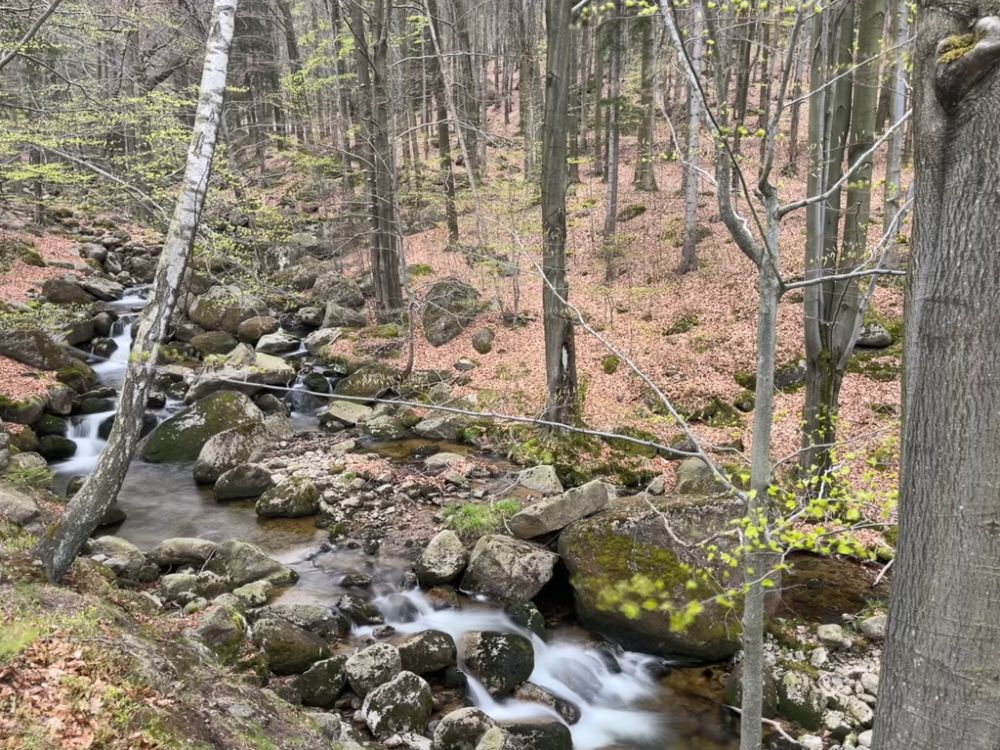
Tips for visiting the Ancient and Primeval Beech Forests
All of the sites mentioned tend to involve longer stays in nature. The hikes through the forests are generally best as a complement to a tour of the surrounding region or a vacation in one of the neighboring towns. Of the ones I’ve visited, only Hainich is worth a separate day trip. The sights there are also wheelchair-accessible.
This seven-day hiking tour in Croatia includes Paklenica National Park, one of the locations in this UNESCO site.
Where are the beech forests?
Note: All points mentioned here can be found on Google Maps and many are accessible by car. Some can also be reached by bus.
- Hainich National Park: Thiemsburg hiking car park, 99947 Schönstedt, Alterstedt district. Fee applies. The treetop walk is also accessible by public transport. Website.
- Serrahner Forest: Zinow/Carpin hiking car park at the Zinow junction on the B198. The Zinow World Heritage bus stop is also located here. Hiking possible at any time, museum open to the public during the day. Website.
- Dürrenstein-Lassingtal: Haus der Wildnis at Kirchenpl. 5, 3293 Lunz am See. Paid parking is available around Lake Lunz. Hiking only permitted on the established official trails. Website.
- Jizera Mountains: Freely accessible 24/7. Accessible by car from Ferdinandsthal, 463 62 Hejnice, to the Rokle Štolpichu hiking car park.
- Central Balkan National Park: Troyan Pass, 4339 Karlovo, Bulgaria (QJJ4+5F Chiflik). Website.
For more information about the Ancient and Primeval Beech Forests of Europe, see their collective website. It has information on every component with links to more information on each one.

